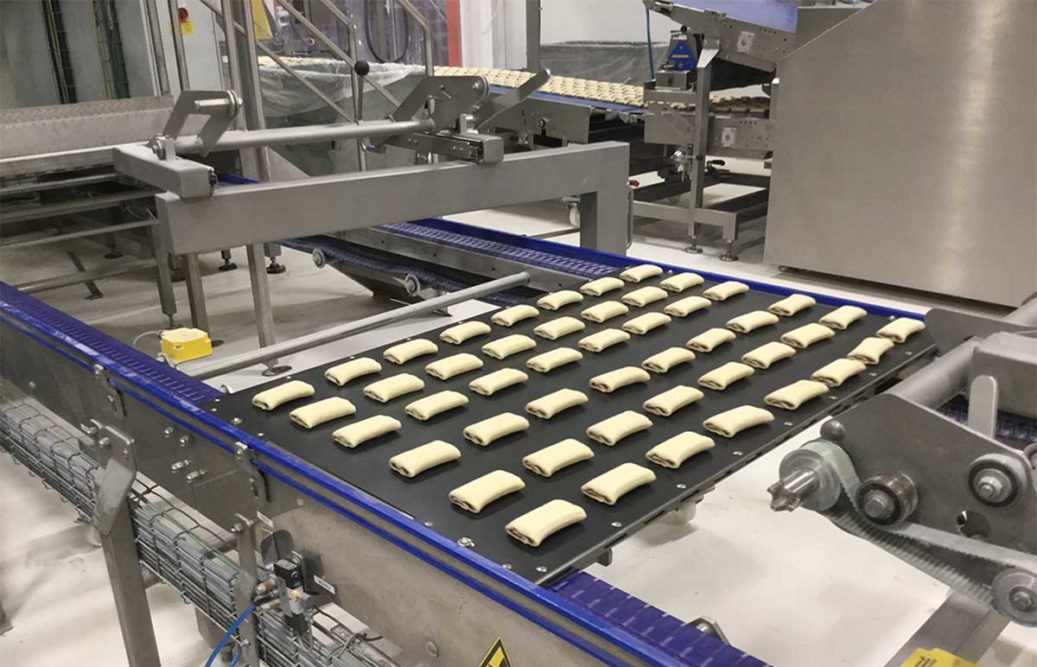New digital technology now allows bakers to put artisan bread production on art-o-matic
On the software side, touch screens that are omnipresent on most lines provide better visualization for easy operations and pinpoint those systems needing preventive maintenance, noted noted Randy Kelly, applications specialists for Fritsch, a Multivac company.
Optional radio-frequency identification codes on production tools, he added, ensure correct startup for each product on makeup lines.
Newer systems also offer self-monitoring and reporting out of various parameters that aid in quality control and provide increased capacity by improving each step of the often-complex production process.
“It’s all about controls, controls and controls,” said Jerry Murphy, vice president, sales and marketing, Gemini Bakery Equipment/KB Systems. “Today’s systems are much more precise with positioning, repeatability and overall efficiency.”
Rademaker bread lines rely on cascading speed controls to make automatic speed adjustments. When an operator makes one setting change, the rest of the line adjusts accordingly. Nick Magistrelli, vice president of sales, Rademaker USA, said cascading allows the line to work in unison to provide greater system efficiencies and reduced overall waste.
[Related reading: Taking a thoughtful approach to automating artisan bread]
Cyril Munsch, global sales director, Mecatherm, explained that newer sensors and other controls also improve consistency by monitoring process deviation, such as unexpected equipment vibrations that can misalign products and other critical variables that could result in waste. These sensors combined with cameras and checkweighers provide the eyes and ears to ensure that artisan products remain within the bakery’s often wide range of specifications for artisan-style products.
Mecatherm’s M-NS dividers, he added, are designed to determine the dough’s density, which can vary extensively, depending on the amount of hydration and desired cell structure of different Old World baked goods.
“With a 3-D reader of the dough strip that’s connected to a checkweigher, we can control the knife, making sure every piece weighs the same, depending on its density, which is constantly monitored, air flow and other factors,” Mr. Munsch pointed out. “We’re incorporating additional technology that we didn’t have before.”
Although checkweighing has been around for decades, incorporating it digitally into the upfront dividing process provides a rapid payback when producing baked goods that come in all types of shapes and textures.
“Checkweighing continues to be important,” said Jay Fernandez, manager of Middleby Bakery Innovation Center. “Companies want to reduce giveaway, dependent on the volume of the dough. As a result, the return on investment can be pretty quick.”
The Handtmann monitoring function system automates the tracking of process parameters with sensors for temperature, pressure and other critical product handling criteria. Cesar Zelaya, Handtmann bakery technology manager, noted the new WS910 checkweighing system with the company’s line control start/stop operation substantially reduces the number of product rejects.
Specifically, Handtmann VF 800 dividers also are capable of downtime tracking, cloud-based data transfer and 4.0 integration into ERP systems. To minimize waste, Mr. Zelaya pointed out that parameter monitoring shuts the machine off if it is ever running outside of specifications.
Digital connections also enable production lines, even when they contain equipment from multiple suppliers, to work in unison. Joerg Sonnabend, manager of marketing communications, Rondo, noted that artisan bakeries also are relying on the Internet of Things for better networking, specifically among mixers and makeup equipment on the front end of the process.
“This improves batch control and simplifies traceability,” he observed.
This article is an excerpt from the March 2021 issue of Baking & Snack. To read the entire feature on artisan bread, click here.





